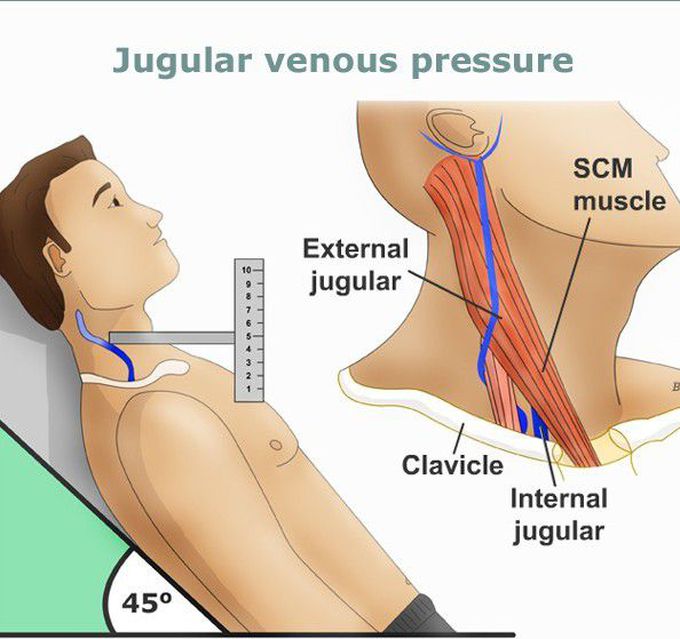


Measurement of Jugular Venous Pressure (JVP)
Definition: Evaluating the pressure in the venous system as the blood is returned to the right side of the heart before it is sent into the pulmonary circulation. Test procedure: The patient lies supine and at 45 degrees. The internal jugular vein is visualised as it ascends the side of the neck between the two heads of the sternocleidomastoid muscle. If the jugular vein appears to be distended attempt to measure the height of the distension as a vertical column of blood in relation to the sternal angle. Test findings: A normal jugular venous pressure should not exceed 3-4 cm above the sternal angle. Higher readings may signify right-sided heart failure, constrictive pericarditis, pleural effusion, obstructed vena cava and other pathologies of the heart and lungs. Considerations: To help you visualise the jugular vein observe the patient’s neck when lying complete flat on the couch. Alternatively placing pressure over the liver (hepatojugular reflux) increases venous return and causes temporary jugular vein distension. Do not mistake the external jugular for the internal. The external jugular vein may appear engorged even in physiological states.


